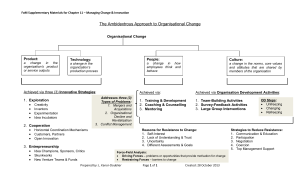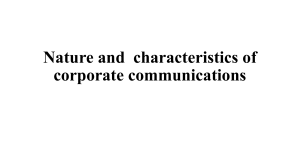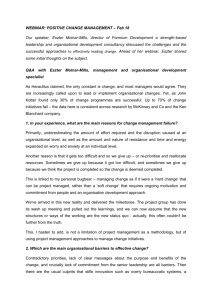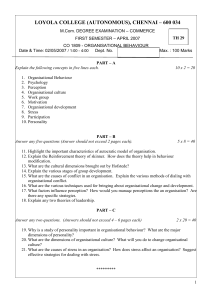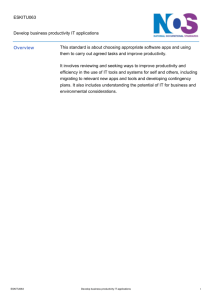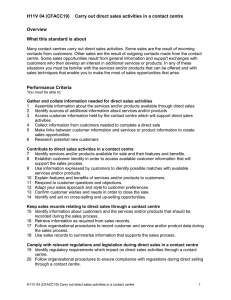WOHP Communications Strategy Template
advertisement
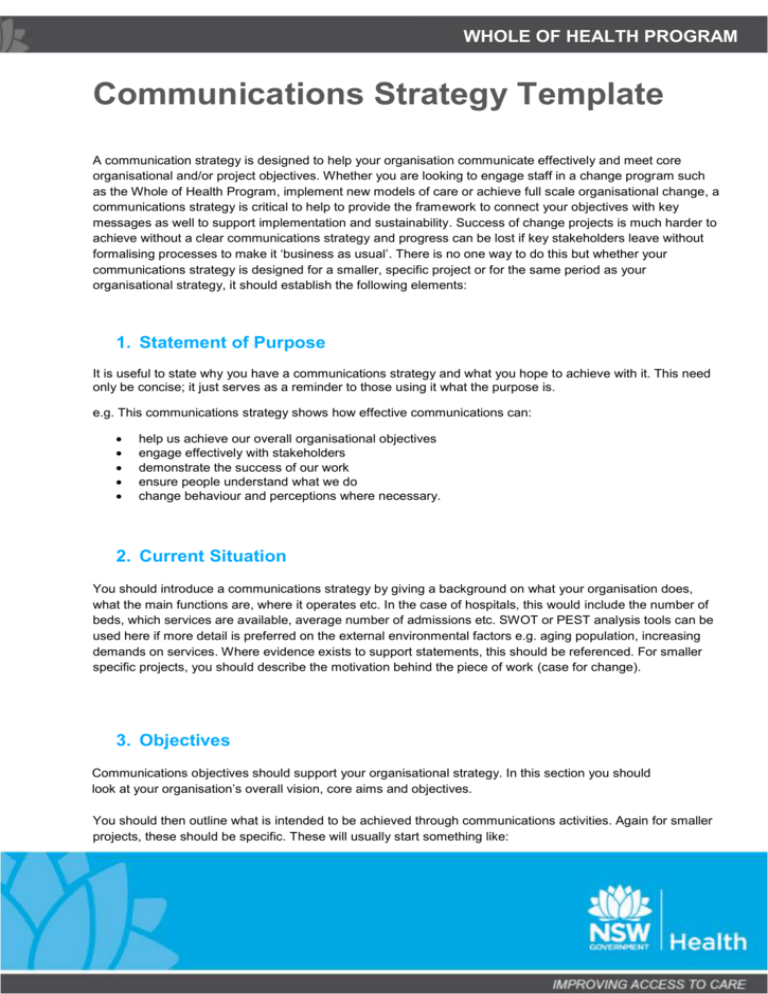
WHOLE OF HEALTH PROGRAM Communications Strategy Template A communication strategy is designed to help your organisation communicate effectively and meet core organisational and/or project objectives. Whether you are looking to engage staff in a change program such as the Whole of Health Program, implement new models of care or achieve full scale organisational change, a communications strategy is critical to help to provide the framework to connect your objectives with key messages as well to support implementation and sustainability. Success of change projects is much harder to achieve without a clear communications strategy and progress can be lost if key stakeholders leave without formalising processes to make it ‘business as usual’. There is no one way to do this but whether your communications strategy is designed for a smaller, specific project or for the same period as your organisational strategy, it should establish the following elements: 1. Statement of Purpose It is useful to state why you have a communications strategy and what you hope to achieve with it. This need only be concise; it just serves as a reminder to those using it what the purpose is. e.g. This communications strategy shows how effective communications can: help us achieve our overall organisational objectives engage effectively with stakeholders demonstrate the success of our work ensure people understand what we do change behaviour and perceptions where necessary. 2. Current Situation You should introduce a communications strategy by giving a background on what your organisation does, what the main functions are, where it operates etc. In the case of hospitals, this would include the number of beds, which services are available, average number of admissions etc. SWOT or PEST analysis tools can be used here if more detail is preferred on the external environmental factors e.g. aging population, increasing demands on services. Where evidence exists to support statements, this should be referenced. For smaller specific projects, you should describe the motivation behind the piece of work (case for change). 3. Objectives Communications objectives should support your organisational strategy. In this section you should look at your organisation’s overall vision, core aims and objectives. You should then outline what is intended to be achieved through communications activities. Again for smaller projects, these should be specific. These will usually start something like: WHOLE OF HEALTH PROGRAM To raise awareness among staff of their roles in managing patient flow and access to care To communicate the benefits of short stays in Emergency Departments To inform frontline health workers about a new model of care/policy 4. Audience This section should give a description of the key stakeholders you communicate or wish to communicate with – internal and external. This will include hospital staff (perhaps broken down into different groups if they require different messages), patients, allied health, nurses, doctors etc. Sometimes this is broken down into primary target audience (people or groups directly affected or who require the most exposure to the message) and secondary target audience (people/groups who would also benefit from hearing the message, particularly as a means of influencing or supporting the primary audience). 5. Key messages Once you have identified your audiences, the next task is to breakdown your objectives into key messages for each group. You should think about what each group needs to know from a practical point of view and what the overarching key messages are. These might be themes running through all the communications. Audience What they need to know Key communications messages E.g. Staff What standards are expected We value staff involvement What the targets are (where relevant) We all have our part to play What projects/models of care are being implemented & why Who is responsible for what How they can input E.g. Patients What services are available We value patients’ time How to access services Patient safety is key What hospitals are doing to ensure safety and quality for patients. ... ... ... WHOLE OF HEALTH PROGRAM 6. Communication method and activities For each stakeholder group, communication methods should be highlighted, including, where relevant, who will be delivering the message and how often. Timing and tone are also important. There will normally be more than one communication method used for each stakeholder group. E.g. staff might be communicated with via staff meetings, e-bulletins, workshops, social media, staff room information boards etc. The method will obviously depend on the type of information being relayed. Stakeholder Communication Need Communication Method What and when Who is responsible? E.g. Medical and surgical ward nurses To understand the impact implementing Patient Journey Boards will have on current work practices Face to Face, Inservice Visit from X by Y to describe their process changes Nurse Unit Manager E.g. Junior Doctors To understand their roles and responsibilities in Criteria Led Discharge Paper fact sheet & grand rounds presentation Presentation at Ground Rounds on X date & fact sheet distributed. Follow up on X date Director of Medical Services 7. Evaluation Plan Consider evaluating the effectiveness of your strategy with both your internal and external audiences. Questions you might ask are: What do you read/see/hear? /What works/doesn't work? /What do you want to see more of?/What information do you need that you are not currently supplied with? /How often do you want us to communicate with you? It is also important to evaluate performance of measurable objectives. If an objective was to raise awareness of a certain project, you should consider how best to measure this. Quantitative analysis (based on empirical data, normally larger samples) or qualitative analysis (more in-depth, generally smaller samples) methods can be used. Consider and discuss the results carefully and use them to amend your strategy. E.g. if awareness of a project becomes high, the strategy might change to be more “engagement” focussed. A communications strategy is a working document and will change over time.
